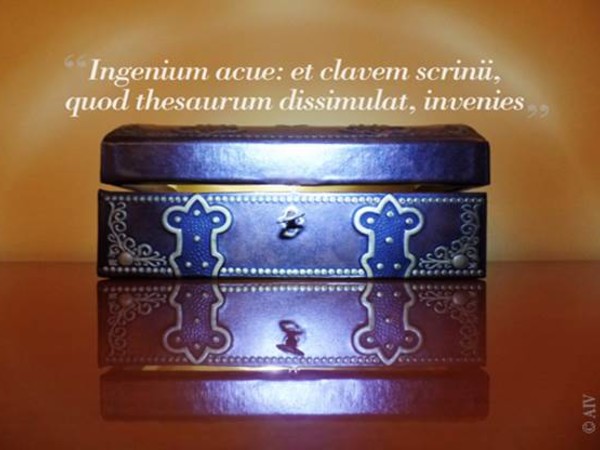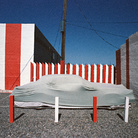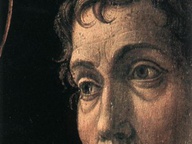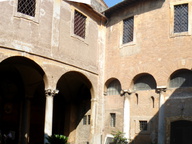Hermeneutics of Symbol, Myth and ‘Modernity of Antiquity’ in Italian Literature and the Arts from the Renaissance up to the Present Day

Hermeneutics of Symbol, Myth and ‘Modernity of Antiquity’ in Italian Literature and the Arts from the Renaissance up to the Present Day
From 19 Dicembre 2016 to 20 Dicembre 2016
Milan
Place: Università Cattolica del Sacro Cuore
Address: Largo A. Gemelli 1
E-Mail info: ida.villa@unicatt.it
Official site: http://convegni.unicatt.it/ermeneutica-simbolo-mito-e-modernitadellantico
The hermeneutics of the “modernity of antiquity” is a still pioneering branch of research in Italian literature and art studies. Its aim is to discover the hidden meaning of works of literature and arts where other approaches failed or proved unsatisfactory.
Its distinguishing trait consists in using, along with all the results of historical, critical and philological studies, ancient pagan religious and mythological sources and heresiological traditions as decisive and yet unexpected interpretative tools to understand literary and artistic works produced in the modern era and in Christian times, but skillfully conceived by their authors – who identify themselves with ancient people that had come back to life in modern times in disguise as crypto-pagans in incognito – as erudite enigmas. The authors created such enigmas from the very same materials taken from ancient pagan religions or heresies, counting on the fact that such sources and the meanings they carry are unknown to the most part of the “common readers” and not only to them. Most of the readers lack indeed the interdisciplinary skills ranging from the literature or the art to the religions of the pagan antiquity, either Mediterranean or non Mediterranean, and to the heresies of Christianity, Judaism and other religions.
The works that can be ascribed to the hermeneutics of the “modernity of antiquity” category, which are actually crypto-pagan works, have therefore been conceived and produced with a multilayered semantic structure, similar to that of a shrine or a palimpsest.
The main objective of the modernity of the antiquity which, more precisely, should be considered as «hermeneutics of the “symbolic-mythological modernity of antiquity”», is to open the lid of the shrine-palimpsest work, which means scraping the scriptio superior of the literary and artistic images so as to reveal the true meaning that their author – riddler in disguise – veiled in thescriptio inferior.
Such images, built with a multilayered semantic structure of a shrine-palimpsest, are actually symbols. “One made of two” is indeed the basic meaning of the Greek word σύμβολον, as used by Plato in Symposium 16, 191D. And as symbolic images, they also carry a different meaning. In other words, they contain an idea which give them a meaning other than the apparent, realistic one.
In the case of works conceived from the perspective of the “symbolic-mythological modernity of antiquity”, symbolic images contain a metaphysical and religious idea and more precisely a metaphysical-religious idea based on the ancient sources of mythology, i.e. pagan religion (generally non Homeric-Olympic, but anti-Olympic, archaic, mystery cults, either Mediterranean or non Mediterranean), or heresies (Christian, Jew, but not exclusively).
The scholars of the “modernity of the antiquity”, that is the “symbolic-mythological modernity of antiquity”, do not limit their research to a descriptive, analytical and empirical analysis. They solve cruxes of interpretation through a deductive-investigative research. After considering all the results of the philological and historical-critical studies, which are their fundamental pre-requisites, they will reach a hermeneutical solution with the aid of their peculiar tools, that is the sources of the ancient pagan religion or of the heresies, sources hidden in the creation of the symbolic images of those works and of the idea they contain and essential to the discovery of their hidden meaning.
To study the “symbolic-mythological modernity of antiquity” means to consider the sources of the ancient pagan religion or heresies that can be found in the scriptio inferior of the images of the works as important hermeneutical clues: they will indeed prove to be the crucial yet unexpected keys to foresee and then to reveal the hidden metaphysical-religious idea that is the recondite meaning of literary and art works unwilling to reveal it for the fact itself of having been built upon themes and pagan o heretic sources that create the religious symbol they carry.
The Second International Conference on “Hermeneutics of Symbol, Myth and ‘Modernity of Antiquity’ in Italian literature and the Arts from the Renaissance up to the Present Day represents a chance to promote the hermeneutics of the “symbolic-mythological modernity of antiquity” at a national and international level and, at the same time, to stimulate new and further studies in this direction that, although still unexplored, promises to open up new and interesting hermeneutical perspectives, not only for scholars but also for other groups of readers.
SCARICA IL COMUNICATO IN PDF
COMMENTI

-
 Dal 20 dicembre 2024 al 04 maggio 2025
Fermo | Palazzo dei Priori
Dal 20 dicembre 2024 al 04 maggio 2025
Fermo | Palazzo dei Priori
-
 Dal 20 dicembre 2024 al 04 maggio 2024
Gorizia | Palazzo Attems Petzenstein
Dal 20 dicembre 2024 al 04 maggio 2024
Gorizia | Palazzo Attems Petzenstein
-
 Dal 18 dicembre 2024 al 18 dicembre 2024
Venezia | Museo Correr
Dal 18 dicembre 2024 al 18 dicembre 2024
Venezia | Museo Correr
-
 Dal 14 dicembre 2024 al 02 marzo 2025
Palermo | Palazzo Abatellis
Dal 14 dicembre 2024 al 02 marzo 2025
Palermo | Palazzo Abatellis
-
 Dal 12 dicembre 2024 al 23 febbraio 2025
Roma | Palazzo Altemps
Dal 12 dicembre 2024 al 23 febbraio 2025
Roma | Palazzo Altemps
-
 Dal 13 dicembre 2024 al 31 agosto 2025
Roma | Museo dell'Ara Pacis
Dal 13 dicembre 2024 al 31 agosto 2025
Roma | Museo dell'Ara Pacis


